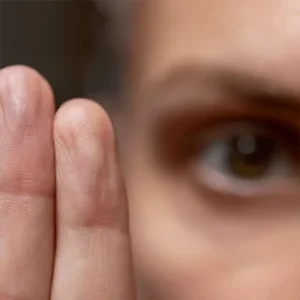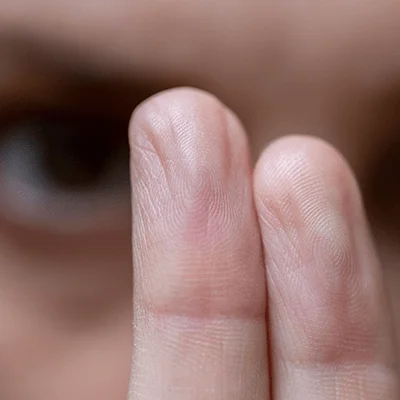Laurence DELINOT
Hypnotherapist
16bis rue du Docteur Roux
75015 PARIS
My name is Laurence DELINOT and I’ ve been a hypnosis specialist since 2011. Here, I’d like to offer you an insight into what eye movement therapy, better known as EMDR, is all about.
Discover how this innovative approach can help you to understand and deprogram behaviours linked to more or less recent traumas. I explain how EMDR works, its immediate effects and its scope of application.
If you’re interested in a first hypnotherapy session in our Paris 15th office or by teleconsultation, don’t hesitate to make an appointment.

When we experience a traumatic event, the brain releases stress hormones to deal with the situation: fight, flight or freeze. After a major emotional charge, we can try to free ourselves by talking. That’s why it’sso important to tell the story of what happened immediately afterwards. The brain can then encode the information as “digested”.

Inother cases, where the information cannot be digested, we speak of post-traumatic stress. The repression of the event in the unconscious can resurface in different forms later on, such as phobiasnightmares, flashes or obsessional ideas. The trauma is always present and alive for the person. Any situation that resonates with the original event reactivates inappropriate and disabling sensations and behaviors.
Sweeping eye movements from left to right stimulate the brain to process the information and release the emotional charge associated with the painful situation.
This technique, developed by Francine SHAPIRO in 1987 in the United States under the name EMDR (Eye Movement Desensitization Reprocessing), paved the way for other currents that drew inspiration from it, adding other complementary techniques such as hypnosis and NLP. EMDR, RITMO, IMO, DECEMO, LESST… all these approaches deal with the desensitization of trauma.
The effects are immediate. Immediately after the session, the person feels great relief. “A weight has been lifted from my chest” say most. The after-effects are just as convincing. Anxiety subsides and may even disappear.
You feel free of a weight, often drained and sometimes tired. As each person is unique, feelings vary.
EMDR is a name referring to the person who discovered this process, Francine SHAPIRO. Bilateral stimulation can be performed by a qualified psychotherapist who has been trained in this technique.
By analyzing the obstacles encountered by the client, the therapist will make the decision to select the most suitable therapeutic method or opt for a combination of several approaches during the sessions. The circumstances for considering an EMDR session are as follows:
On average, the price of an EMDR consultation varies between €60 and €100, depending on the practitioner, his or her experience and geographical location.
The first session is an information-gathering session, during which the client tells her/his life story and talks about the traumatic events she/he wishes to free herself/himself from. If no event is clearly identified, the therapist will make the link between the behaviors to be changed in the present and certain situations described in the life history.
In the second session, the protocol is applied to a specific event. The person reconnects with the disturbing situation and rates the intensity of the disturbance on a scale from 0 to 10. Together, the therapist and consultant identify the negative beliefs that have been self-programmed by this event, and gradually desensitize and deprogram the emotional charge using alternating eye movement stimulation or tapping on the knees. It’s normal to have strong sensations during the session, but the therapist’s role is to be present and reassuring.

Explore practical tips for living fully in the present, letting go of the need to control everything and cultivating a serene state of mind!
Wounds from rejection, abandonment, betrayal, injustice, humiliation… Discover the 5 emotional wounds and how hypnosis can heal you!
Sometimes our subconscious overrides our controlled system. Deciphering how we work!